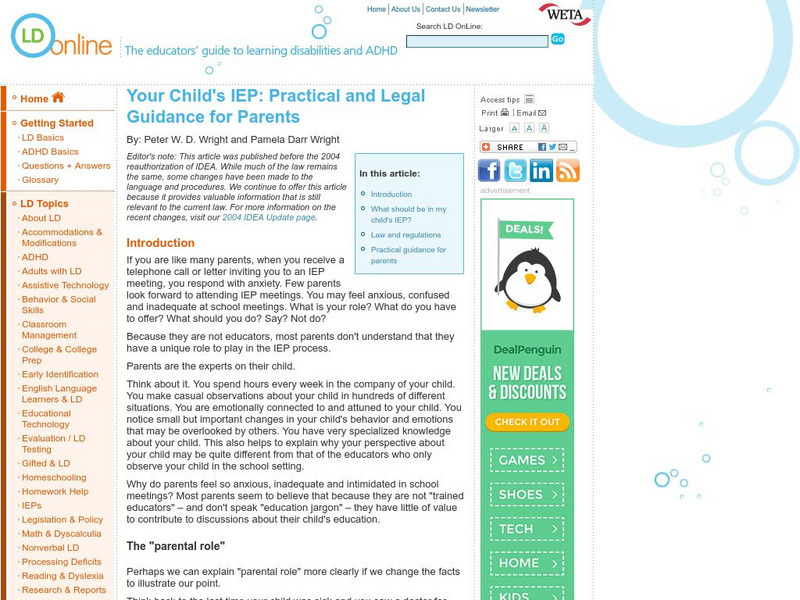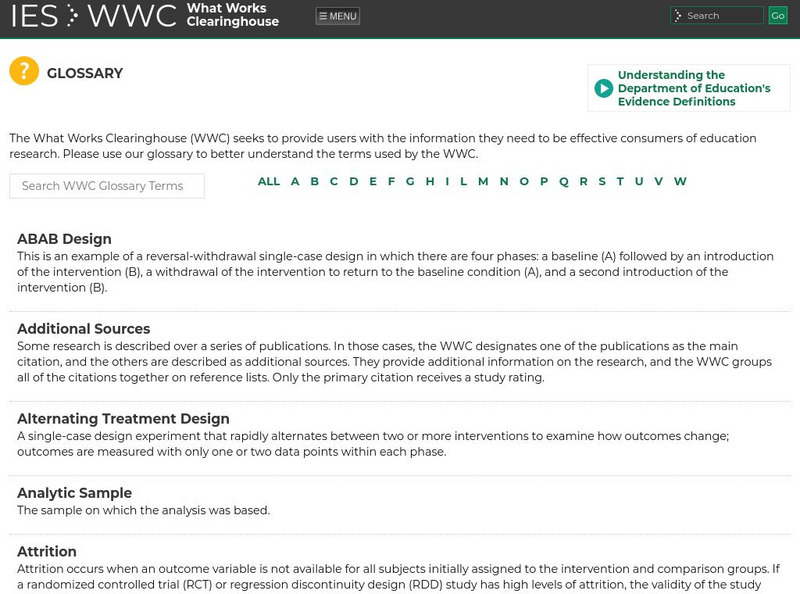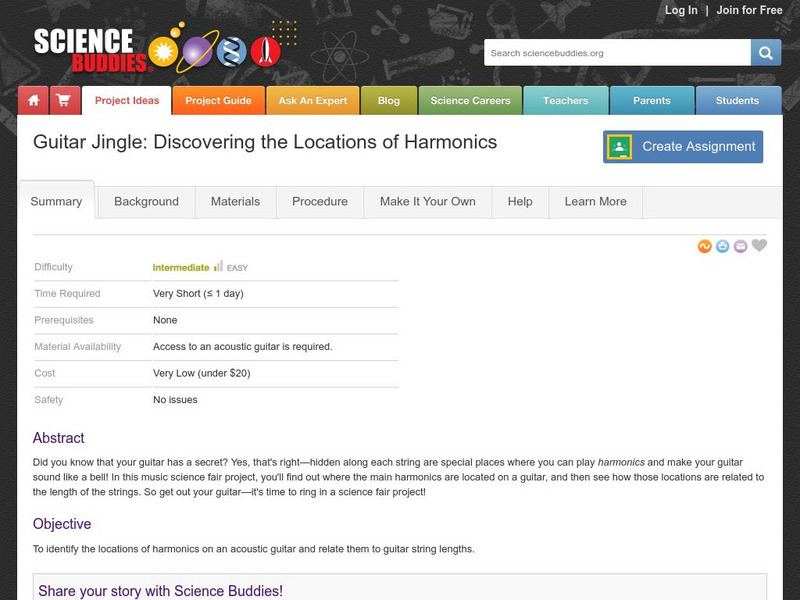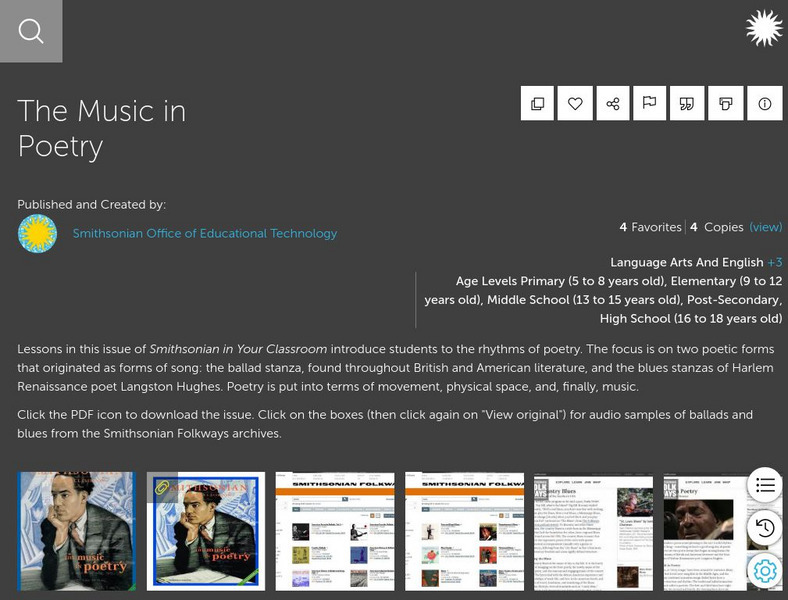John F. Kennedy Center
The Kennedy Center: Masks and Aesop's Fables
This multi-media visual and language arts lesson offers intellectual, creative, and interpretive opportunities through use of books, music, and the internet. It offers complete grade-leveled lesson plans for grades k-4 which include...
John F. Kennedy Center
The Kennedy Center: Lesson: Weather and Wind
Here's an engaging activity to incorporate dance into your science lessons on weather! Students study wind, and various weather patterns, then create their own dance to illustrate what they have learned. Provides links to more...
John F. Kennedy Center
The Kennedy Center: Lesson: A Listening Doll
In this lesson plan, students explore the tradition of Pueblo "Listening dolls" and create their own version of this historical tradition. Also contains a rubric, extensions, and books to use as references.
FNO Press
From Now On: Filling the Tool Box
Dr. Jamie McKenzie offers this comprehensive look at how to help students develop questioning skills. Practical suggestions for how to implement the ideas are also included.
Folger Shakespeare Library
It's Elementary! Stomping and Romping With Shakespeare
In this elementary school-age instructional activity, children will learn about rhythm and meter through the lines of William Shakespeare. Students will recite and "act out" the song lines from "A Winter's Song" found in Love's Labour's...
Center For Civic Education
Center for Civic Education: Constitution Day and Citizenship Day
September 17 is recognized in the United States as Constitution Day and Citizenship Day. The purpose of Constitution Day and Citizenship Day is to commemorate the creation and signing of the supreme law of the land and to honor and...
PBS
Pbs Learning Media: Mammals Get Their Chance
In this video segment adapted from NOVA, animations of an asteroid hitting Earth are used to illustrate this widely accepted theory of dinosaur extinction and the resulting conditions that favored mammals.
PBS
Pbs Learning Media: Bird Food and Bird Beaks
There are almost as many types of bird beaks as there are types of food that birds like to eat. This collection of images shows a wide range of beaks and the types of foods handled by each.
PBS
Pbs Learning Media: Colorful Creatures
For animals, bright, flashy coloration can serve as a warning or as an invitation. Either way, colorful skin, feathers, and scales yell, "Notice me!" This collection of images shows examples of some of the world's most colorful creatures.
PBS
Pbs Learning Media: Bird Beak Gallery
This collection of images of ten different birds illustrates the diversity of bird beaks.
LD Online
Ld Online: Your Child's Iep: Practical and Legal Guidance
A complete and extensive parent guide to the IEP process, laws and regulations, and components of an IEP. The article provides pages of information on IEP's, and serves as an excellent reference for parents.
Environmental Education for Kids
Eek!: Canada Goose
Read all about Canadian geese at this fun and interesting site! What do Canadian geese look like? How do they behave? Where do they live? Learn the answers to all of these questions, and more!
US Department of Education
U.s. Department of Education: Institute of Education Sciences: Glossary
A glossary of words commonly encountered when reading about educational research. Either scroll through the complete list or go to a specific letter, then click on the word and a definition will be provided.
Science Buddies
Science Buddies: Project Ideas: How Much Water Is Absorbed by Dried Beans?
In this cooking and food science fair project, measure how the water content of dried beans changes with time. The Science Buddies project ideas are set up consistently beginning with an abstract, objective, and introduction, followed by...
Science Buddies
Science Buddies: Guitar Jingle: Discovering the Locations of Harmonics
In this music science fair project, students will discover the locations of harmonics on an acoustic guitar and relate them to guitar string lengths.
Science Buddies
Science Buddies: Project Ideas: Whirl Y Bird vs. Whale Y Bird
Improve the design of a very simple aircraft, the whirlybird, and learn about hydrodynamics and biomimicry in this science experiment. The Science Buddies project ideas are set up consistently beginning with an abstract, objective, and...
Science Buddies
Science Buddies: The Bouba Kiki Effect
It may be possible for certain symbolic characteristics, like sharpness and roundedness, to cross language barriers. In this experiment you will investigate the Bouba-Kiki Effect to find out if abstract visual properties can be linked to...
PBS
Pbs Learning Media: Wild Kratts: All About Lizards Lesson Plan
Students explore the diversity of lizards in terms of characteristics, behavior, and habitat. Activities feature five species of lizards and their special body structures needed for survival.
Smithsonian Institution
Smithsonian Learning Lab: The Music in Poetry
Smithsonian in the Classroom presents The Music in Poetry. Teachers can download this comprehensive teaching package for exploring the rhythms in poetry. Includes background information, lesson extensions, student handouts, examples of...
Writing Fix
Writing Fix: Writing Across the Curriculum
Designed by groups of Nevada teachers, this collection of modules and lesson plans is continually growing. Find suggestions for incorporating good writing practices in non-language arts areas of the curriculum from history to science.
Chase Young, PhD
Dr. Chase Young, Ph D: Reader's Theater Script: Cinderella V.1 [Pdf]
A reader's theater adaptation of the fairy tale, Cinderella V.1, is provided on this script. Nine character roles are needed in this performance.
BioEd Online
Bio Ed Online: Living Things and Their Needs: Need or Want?
Learners learn the difference between wanting something and needing something in order to survive. The lesson can be downloaded in PDF format.
BioEd Online
Bio Ed Online: Raw vs. Processed Food
In this activity students will gain an understanding of what "processed" means. They will also distinguish between natural and processed foods, and learn about sources of some foods.
BioEd Online
Bio Ed Online: Making a Water Cycle
In this lesson students are required to observe a simple model of the water cycle constructed of sand and ice in a plastic shoe box.

















